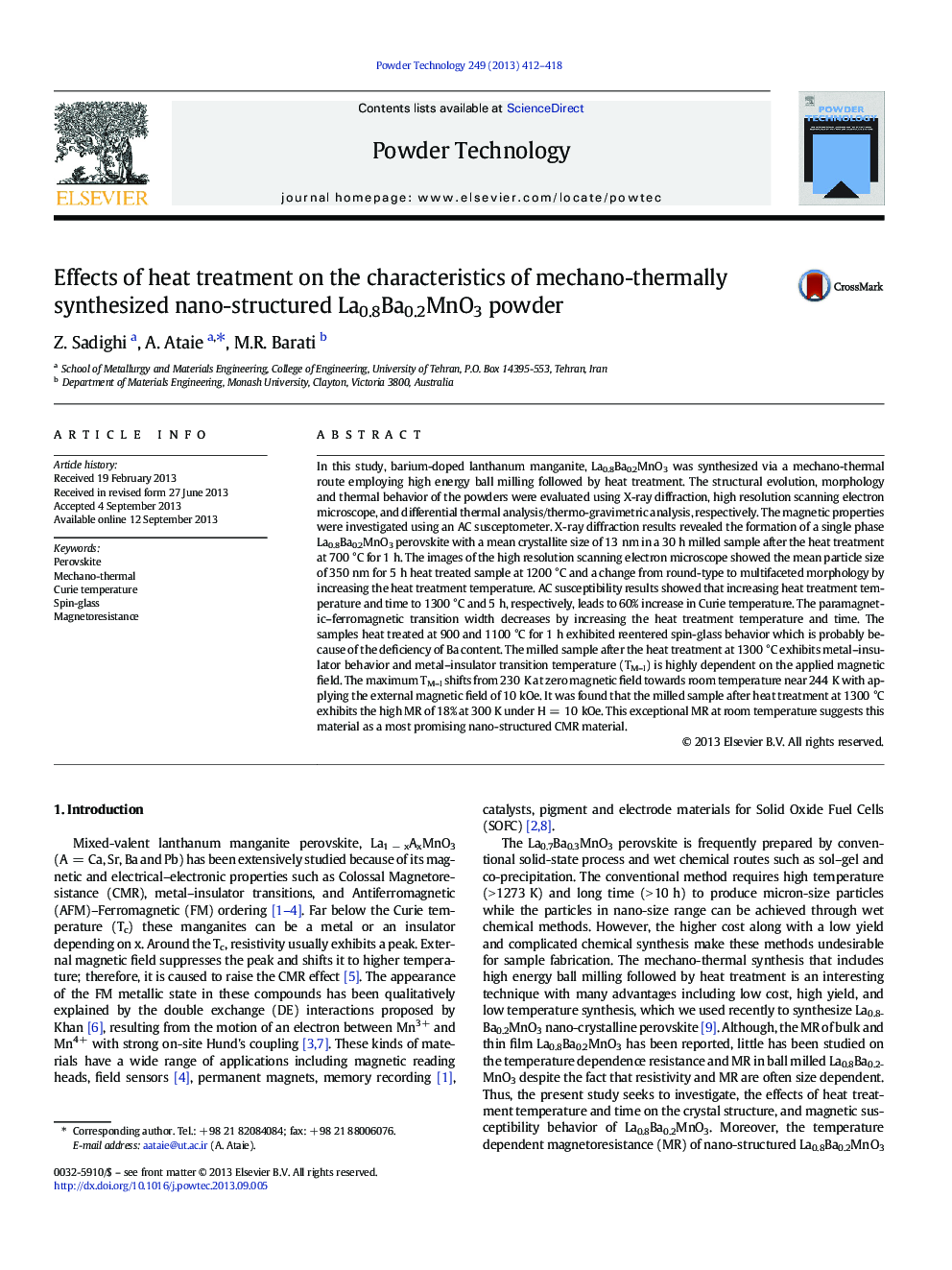| Article ID | Journal | Published Year | Pages | File Type |
|---|---|---|---|---|
| 236360 | Powder Technology | 2013 | 7 Pages |
•Nano-structured La0.8Ba0.2MnO3 was synthesized via the mechano-thermal route.•Single phase La0.8Ba0.2MnO3 was formed at a low temperature of 700 °C.•Tc increases sharply by increasing the heat treatment temperature and time.•Magnetoresistance under H = 10 kOe is approximately 18% near the room temperature.
In this study, barium-doped lanthanum manganite, La0.8Ba0.2MnO3 was synthesized via a mechano-thermal route employing high energy ball milling followed by heat treatment. The structural evolution, morphology and thermal behavior of the powders were evaluated using X-ray diffraction, high resolution scanning electron microscope, and differential thermal analysis/thermo-gravimetric analysis, respectively. The magnetic properties were investigated using an AC susceptometer. X-ray diffraction results revealed the formation of a single phase La0.8Ba0.2MnO3 perovskite with a mean crystallite size of 13 nm in a 30 h milled sample after the heat treatment at 700 °C for 1 h. The images of the high resolution scanning electron microscope showed the mean particle size of 350 nm for 5 h heat treated sample at 1200 °C and a change from round-type to multifaceted morphology by increasing the heat treatment temperature. AC susceptibility results showed that increasing heat treatment temperature and time to 1300 °C and 5 h, respectively, leads to 60% increase in Curie temperature. The paramagnetic–ferromagnetic transition width decreases by increasing the heat treatment temperature and time. The samples heat treated at 900 and 1100 °C for 1 h exhibited reentered spin-glass behavior which is probably because of the deficiency of Ba content. The milled sample after the heat treatment at 1300 °C exhibits metal–insulator behavior and metal–insulator transition temperature (TM–I) is highly dependent on the applied magnetic field. The maximum TM–I shifts from 230 K at zero magnetic field towards room temperature near 244 K with applying the external magnetic field of 10 kOe. It was found that the milled sample after heat treatment at 1300 °C exhibits the high MR of 18% at 300 K under H = 10 kOe. This exceptional MR at room temperature suggests this material as a most promising nano-structured CMR material.
Graphical abstractFigure optionsDownload full-size imageDownload as PowerPoint slide
